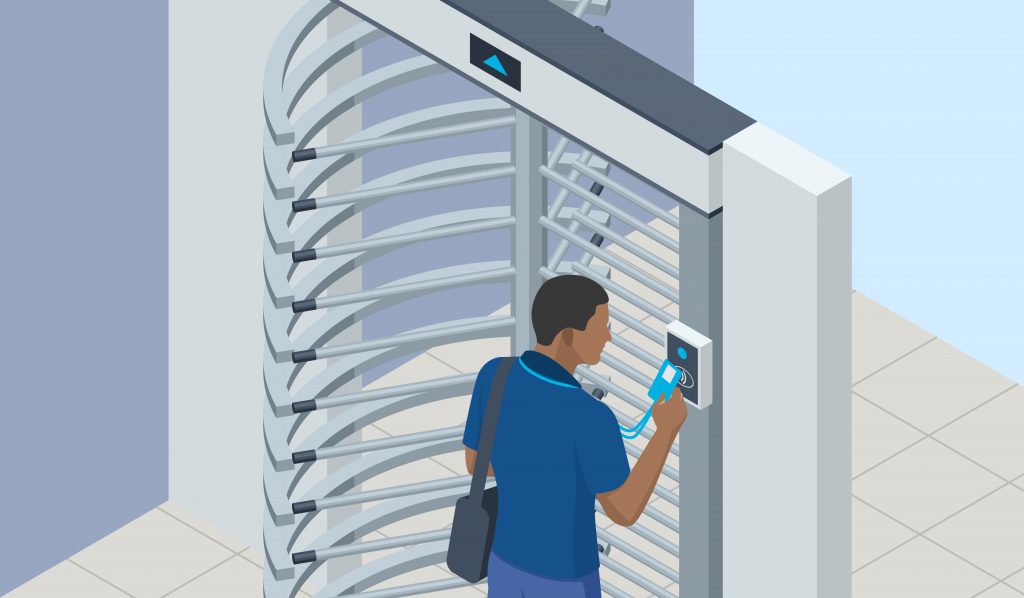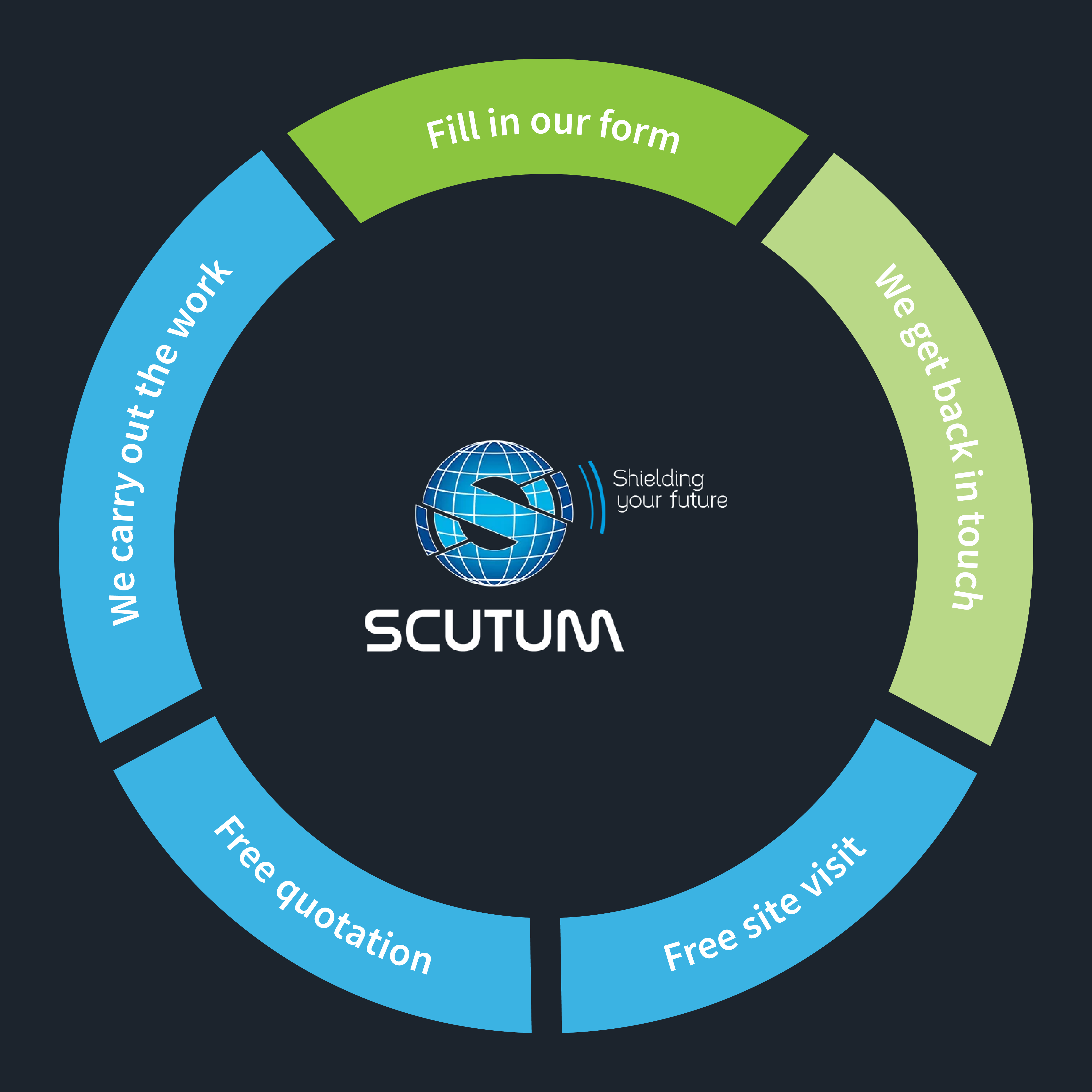A Guide to The Different Types of Physical Access Control
We recently wrote about why your business needs an access control system; but once you have come to a decision that it’s a sensible idea, you then have the problem of deciding which type is going to be the best for you.
In this article, we’re going to examine some of the most common and effective solutions to discover how they work, together with their individual advantages and disadvantages.

Key Fobs
What are they? Similar to the fob you might use to open the locks on your car door, but usually without the need to press a button to gain access (or lock up). Each fob can be individually programmed so that it can, for instance, allow access via a main entrance and any internal doors the user is allowed to access. To gain access, you hold the fob close to a sensor located by the door, triggering the lock and allowing the user in.
Advantages: Key fobs are quick and easy to use, and you won’t be relying on users to remember codes. One of the great advantages of the system is the flexibility that puts you in control over who can access individual areas of your premises and who can’t. The system can also be used to capture data, so that you can monitor either the movements of individuals or who is going in and out of specific parts of your business premises.
Disadvantages: Compared to some of the other systems, there may be a higher cost involved, as every authorised person needs to be allocated their own personal fob. If someone leaves the business and you are unable to retrieve the fob first, or someone loses their fob, then you might have to reprogramme the sensor and fobs for all the doors if you want to maintain strict access control.
Keypads
What are they? A keypad is located at each entry point – to gain access, the user has to enter a preset code, usually a sequence of numbers.
Advantages: Keypad systems are easy to manage because there are no fobs to issue and programme (or reprogramme). As long as everyone can remember the required code, then once it has been set up, there should be little further administration required to keep it operating successfully. And with no key or fob for anyone to lose, you don’t have to worry about the cost of replacements or the worry of them falling into the wrong hands.
Disadvantages: With a keypad system, you are relying on people remembering what the code is. Delays can be caused by forgetful users checking their prompts or calling for help to gain access. And those forgetful users won’t be helped by the fact that you’ll almost certainly need to reprogramme with a new code after a staff member leaves if you want to keep your security tight.
Swipe cards
What are they? This is a system commonly used in hotels and works in much the same way as the keyfob system, except that instead of a fob, users are issued with a card – similar in size and appearance to a credit or debit card – with a metallic strip. The card can be programmed for specific entry points, with the user being required to swipe their card through a reader to gain access.
Advantages: A swipe card system has many of the flexibility advantages of the keyfob, but is generally cheaper to operate. And because the cards are cheaper than fobs, it’s not such a big issue if they are lost or not handed back when a user leaves the organisation.
Disadvantages: Whereas keyfobs will usually be robust, swipe cards – and in particular the metal strip – are more susceptible to getting damaged. This is why they are more commonly appropriate for short-term use – as in a hotel – rather than over longer periods.
Fingerprint biometrics
What are they? Also increasingly commonly used to access mobile phones, this solution uses the unique nature of our fingerprints to create a fast and secure access control system. Fingerprints of those allowed access are stored in a central database – a reader at the access point compares a fingerprint to those in the database and grants or refuses entry depending on whether it recognises it or not.
Advantages: Because our fingerprints are unique to us all, the person has to present for them to be used. There is no risk of the means of access being lost, stolen or forgotten.
Disadvantages: The technology required for this kind of access control means that it is likely to be more expensive than others. There may also be perceived issues of invasion of privacy, with members of staff perhaps unwilling to allow their employers to own such sensitive and personal material, especially if they feel there is a risk of someone hacking the database.
Gates and barriers
What are they? A traditional means of access control, gates and barriers are physical objects that prevent entry until someone actively grants it. Access can be granted either by someone manning the barrier in question or by video identification and authorisation.
Advantages: Gates and barriers may be expensive to install, but once they’re up and running, you generally don’t have to worry about much else other than having someone with the time to let everyone in and out.
Disadvantages: Having your barrier physically managed by a member of staff will mean a wage spent on someone who may be spending a lot of time sitting around waiting and unable to do anything more productive. With a video system, they can at least get on with other tasks, but they still need to be able to regularly drop what they’re doing when someone wants to get in.
If you’re still not sure about the best access control system for your commercial premises, why not take advantage of a free site visit from an experienced Scutum London adviser? Our experts can assess your business and make an informed recommendation based on your requirements, preferences and budget. We’ll also provide a free quotation for the work – and, as we always aim to beat any other quote, you can be sure that you’ll be getting not just the best access control system for your business, but exceptional value as well.
Get in touch with us now to find out more.
Request a Callback
Just fill in your details below and we'll get back to you as soon as we can!

About Scutum London
Scutum London is a leading expert in fire safety and security solutions for businesses and organisations located across South East England, including London and Surrey.
From fire alarms, fire extinguishers and fire risk assessments to access control, CCTV and intruder alarm systems – and a lot more besides – we offer a comprehensive range of products and services designed to keep you, your business and your staff and visitors safe.
With decades of industry experience to call on, we’re proud to hold accreditations from leading trade associations and bodies such as British Approvals for Fire Equipment (BAFE), the British Fire Consortium, the Fire Industry Association (FIA) and Security Systems and Alarms Inspection Board (SSAIB).
If you’d like to find out more about Scutum London, get in touch with our friendly team or explore our products and services on our site.

